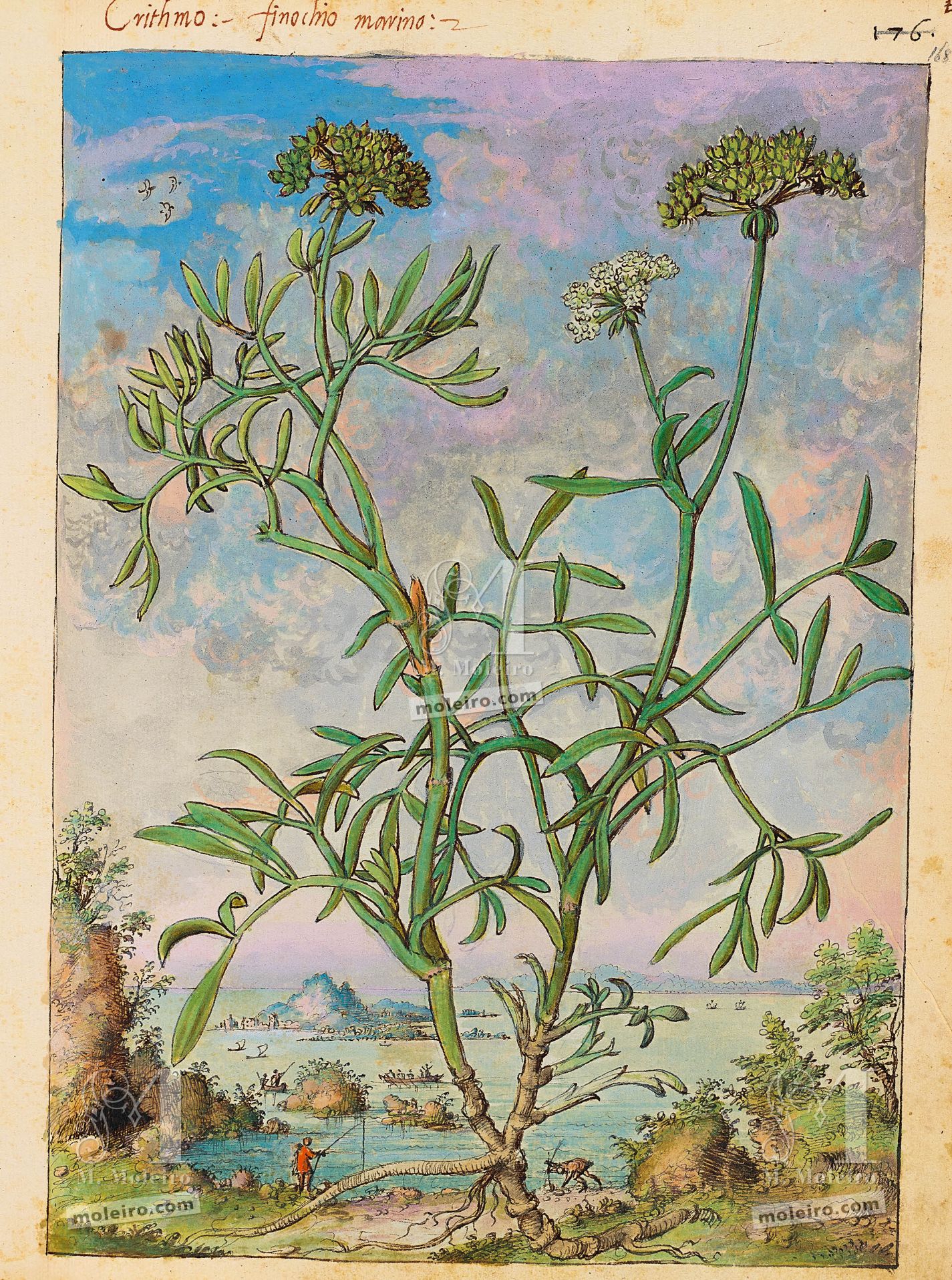"Samphire, or as many call it, crithmum, is a bushy little plant covered in leaves which grows to a height of almost a cubit. It grows in maritime regions and stony places, with many leaves, very salty to the taste, fat, whitish, similar to those of purslane, although they are broader and longer. It has white flowers; the seed is tender, round, and scented like rosemary; it bursts open when dry and has inside a kernel like a wheat grain. The roots, three or four, are as thick as a finger and have a pleasant scent. The decoction of the roots, leaves and seeds, made with wine and drunk, is useful for retaining urine, for excess of bile, and for inducing the menstrual cycle. Samphire is eaten both raw and cooked, like other plants in the kitchen garden, and is preserved in pickle."
(f. 167v).
This plant grows on sea cliffs along all European and Mediterranean coasts. It is also called sea fennel. Its divided, rather fleshy leaves are rich in vitamin C and eaten pickled: a centuries-old practice. Sailors ate them to prevent scurvy. It is often eaten in Italy, where it is grown in orchards and known as erba di San Pietro or herb of St Peter, the patron saint of fishermen.
Ramón Morales ValverdeReal Jardín Botánico de Madrid
(Extract from the commentary volume of
Mattioli's Dioscorides illustrated by Cibo)
